Browse Exhibits (21 total)
Uncle Wonder's Workshop
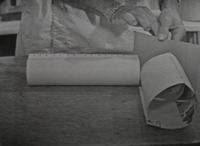
1958, 26 episodes, WCET (Cincinnati)
From WNET:
"Uncle Wonder makes the principles of the sciences simple for the pre-school child. Glenn Ryle, as Uncle Wonder, participates with children in their own world to help them discover some of the “truths” of the world. The series emphasizes power and includes simple demonstrates of natural phenomena such as gravity, sound, light, etc. Uncle Wonder operates in a three-part workshop: workbench for woodworking and demonstrating; nursery section for planting and plant demonstrations; and a laboratory setting for work with water, chemicals, and other liquids. Uncle Wonder makes the principles of the sciences simple for the pre-school child. He uses domestic objects, such as a milk bottle or a bar of soap, to illustrate how rain is formed or how surface tension works. Many of his TV experiments can be duplicated in the home with materials normally at hand. Uncle Wonder in each program invites his viewers into his workshop where he answers many of the questions of wonderment that fill the minds of little folk."
The Secret of Flight
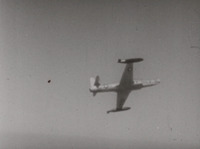
1959, 13 episodes, State University of Iowa
From WNET:
"'The Secret of Flight' is a lecture series about the basic problems of flight, explained by visual presentation of flow experiments. As the material of the lectures should be understood by every interested listener, no mathematical or other theoretical knowledge is used for explanation. Every problem is demonstrated by a true-life experiment and purely scientific language is avoided. Each of the lectures deals with a basic problem of flight. The experiments are mostly shown as flow picture but at certain points scale models and flying models are used to ensure easier understanding. As an average there are about eight different experiments in a half hour lecture at the end of each presentation. The lecture series is divided into two main divisions. Lectures one through seven explain the basic problems which lead to the invention of the airplanes. Lectures eight through 13 point out the more modern problems of aerodynamics and explain some subjects of general interest which ae connected with flight and fluid motion. The series was produced by the State University of Iowa and directed by Sam Becker, head of SUI’s television department."
Scientific methods
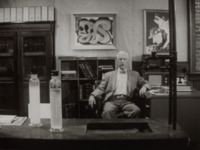
13 episodes, 1958, KQED (San Francisco)
From WNET:
"In “Scientific Methods” Dr. Joel Hildebrand, of the University of California, reveals to the adult layman and the high school student the excitement and the discipline involved in the scientific investigation of any problem concerning man. He demonstrates that science is neither book learning nor technical manipulation and shows what scientists actually do and how they do it. The series will explain the scientific approach as an antidote to prejudice, superstition and emotional thinking. It will demonstrate the influence of scientific findings upon social and ethical evaluations."
Science and human responsibility

23 episodes, 1957-1958, KETC (St. Louis)
From WNET:
"This series of program features distinguished persons in several fields of knowledge who will apply their powers of constructive thought to the problems of adjustment to the changing pattern of man’s life caused by the advances in scientific knowledge. The program grew out of conferences telecast by KETC, St. Louis form the Washington University campus. The conferences were arranged by Dr. Arthur H. Compton, Nobel Prize winning scientists. About half the programs are interviews-in-depth by Dr. Huston Smith of Washington University with individual participants regarding their thoughts on certain major issues considered at the conference. The remaining programs include group discussions by the conference participants."
Astronomy for you
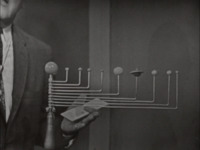
13 episodes, 1959, META
From WNET:
"This series of programs is designed for the adult layman who has a curiosity about the skies and the makeup of the universe in which we live. The terms used during the series are fully explained and materials from a number of great observatories and institutions of learning are used for visual illustration. The series begins with the solar system and works outward, stimulating interest in this area and awakening a desire for further study and investigation."
Last continent: Antarctica
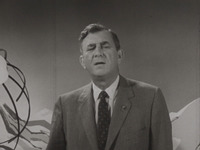
12 episodes, 1959, KTCA (St. Paul)
From WNET:
"Dr. Laurence M. Gould, president of Carleton College and director of the United States Antarctica Program, explains the purpose of the Antarctica Program and its importance in connection with the International Geophysical year. Dr. Gould cites the basic concept for this series as “The ultimate supremacy of man’s sprit in conquering his environment.” The series is oriented around the various scientific disciplines being examined in Antarctica and the conditions under which these examinations take place. A large amount of film footage shot in Antarctica by IGY photographers and the US Navy and Coast Guard is incorporated in this new series. The series was produced by KTCA-TV, St. Paul."
Discovery
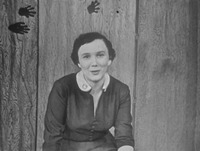
39 episodes, 1957, WGBH (Boston)
From WNET:
"'Discovery' produced by WGBH-TV aims to make learning about the world in which we live an adventure for young people -- an advantage that opens the doors to many fields of scientific knowledge. Living animals and plants and other visuals become the illustrations for what the producers of “Discovery” call “how learning” -- how something causes something else, how change in one situation is related to another, how animals are adapted to live in their specific environments, and how plants, animals and man are related to one another. Airing not only to stimulate intellectual curiosity about the world around us, but hoping also to encourage creative activity on the part of young viewers, emphasis is placed on what the child can do at home. Guest on the programs include scientific experts as well as boys and girls with science hobbies. The presentations are straightforward and the demonstrations interesting and unusual enough to command the attention of upper elementary grade students, junior high, and even high school biology classes.
Featured Personality: Mary Lela Grimes
The producer, writer and narrator of the “Discovery” series is a young woman from North Carolina: Mary Lela Grimes. All of her life she has had nature hobbies such as collecting butterflies, keeping wild pets, naming plants, studying minerals, and watching birds. After her graduation as a Phi Beta Kappa from the University of North Carolina, she became director of the Durham Children’s Museum and wrote a daily column on nature for the Durham Herald Sun. When she and her husband moved to Boston, she joined the staff of the Massachusetts Audubon Society, working in the elementary science teaching program. She also did newspaper, radio and TV work for the Society and helped organize and direct the Society’s Wildwood Nature Camp at Camp Barre, North Carolina. In 1954, Mrs. Grimes was awarded a fellowship to study communications by the National Wildlife Federation. she spent a year at Boston University (where she received her MS) and there began working with WGBH-TV in planning science programs for children. It was here that the idea of “Discovery” was born."
Discovery at the Brookfield Zoo
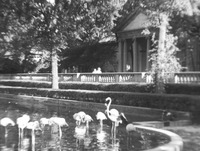
13 episodes, 1959, WTTW (Chicago)
From WNET:
"Mary Lela Grimes returns with program which are essentially a continuation of the original “Discovery” series. Moved to a new locale, Chicago’s Brookfield Zoo, the series will introduce its viewers to the strange and wonderful inhabitants of a zoo. Through visits to various cages, viewers learn about the families who live in them."
Doctors in space
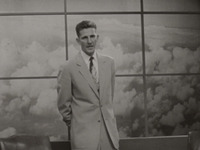
13 episodes, 1958, KUHT (Houston)
From WNET:
"This timely series explores what is now known about flight into space and resultant medical problems and includes the latest scientific developments in space medicine. Much stock footage from US Air Force films is included, and experts in missile development and space medicine appear on the programs. (Biographical information of the special guests is included in the description of each individual programs.) The basic aim of the series is to inform the public about the advances made in space flight, the problems encountered there, and the medical research going on to enable man to fly in space. In this age of dog-bearing satellites, National Educational Television viewers will be interested to learn of the possibilities of trips by human beings into outer space. Produced by KUHT, Houston in co-operation with the US Armed Forces, “Doctors in Space” has been cleared by the Department of Defense."
Challenge
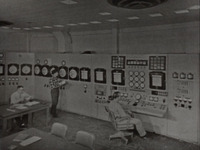
22 episodes, 1962-1964, Ross-McElroy Productions
From WNET:
"Produced in the various laboratories of the Argonne National Laboratories in Chicago, CHALLENGE is designed to convey the excitement of scientific research. It deals in part with the motivations that lead a person toward a career in scientific research. A number of projects, including the possibilities and development of peaceful uses for the atom, are examined. Guests who appear during the series are staff members at the Argonne National Laboratories. CHALLENGE was produced for N.E.T. by Ross-McElroy Productions of Chicago. Producer: David McElroy. Director: Clifford Braun. Writers: David McElroy and John Suchy, CHALLENGE was produced under a grant from the U.S. Atomic Energy Commission’s Argonne National Laboratories."

